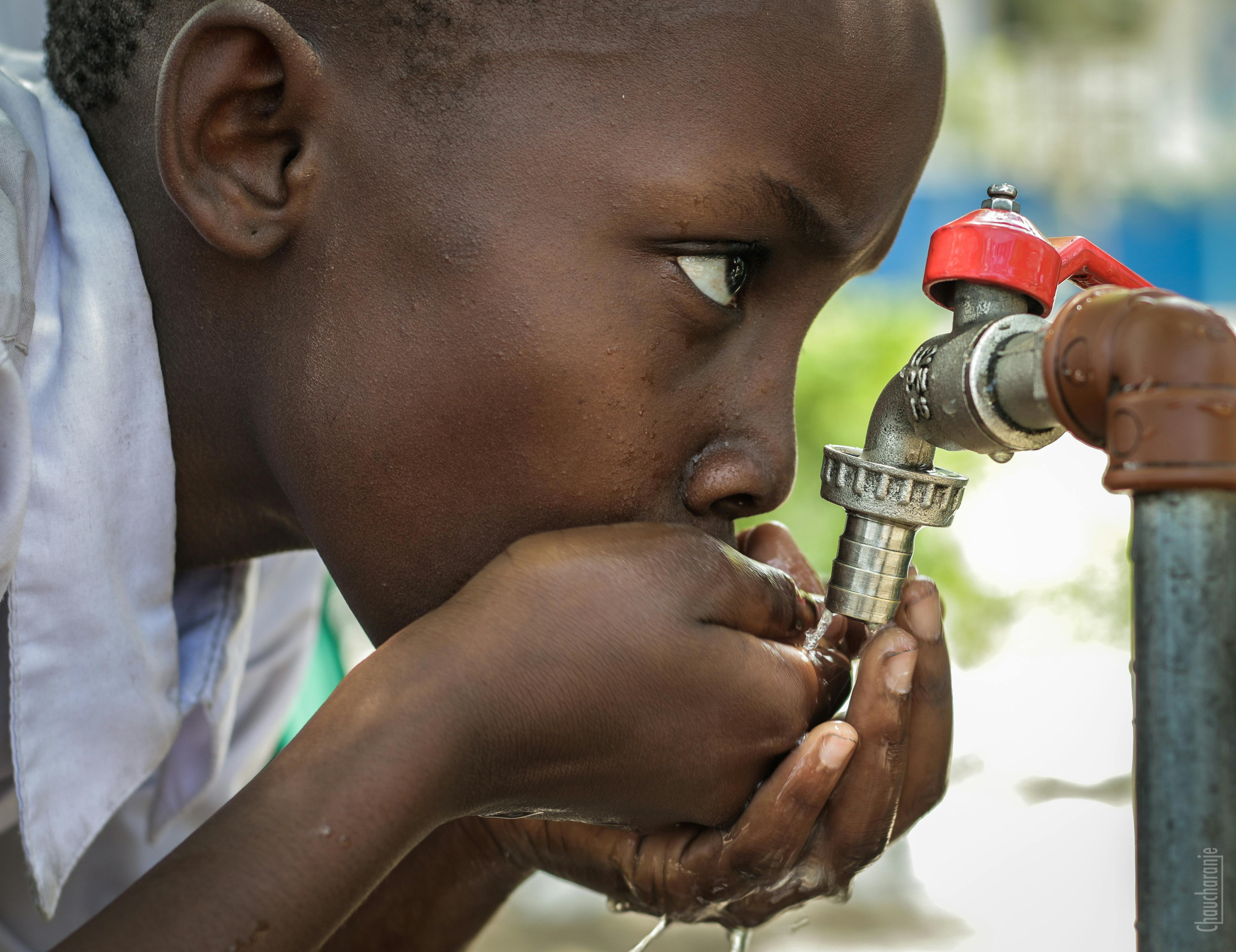The difference between distilled water and drinking water is significant. Distilled water is water that has been heated to boiling point, and then condensed back into a liquid form. This process removes any impurities or minerals, resulting in pure H2O with no contaminants. Drinking water, on the other hand, is water that has not been distilled and contains minerals, such as calcium and magnesium, as well as other impurities.Distilled water is water that has been purified through a process of distillation. This process involves boiling the water and then condensing the steam back into a liquid form. Distilled water is free from impurities, minerals, and chemicals, which makes it an ideal choice for drinking, cooking, and other uses.
What Is Drinking Water?
Drinking water, also known as potable water or safe drinking water, is water that is safe to drink or use for food preparation. It must be free of harmful contaminants such as bacteria, viruses, parasites, and chemical pollutants. Access to safe drinking water is essential for human health and well-being. In many parts of the world, access to clean drinking water is limited due to a lack of infrastructure or resources. The World Health Organization estimates that over two billion people lack access to safe drinking water.
Safe drinking water can be obtained from a variety of sources including public taps and wells, bottled water and home filtration systems. Public taps and wells should be tested regularly for contaminants such as bacteria and parasites; if contamination is detected, the tap or well should not be used for drinking or food preparation. Bottled water can provide a convenient alternative but may be more expensive than other sources of drinking water. Home filtration systems can also provide clean drinking water at a lower cost than bottled water; however, these systems must be maintained regularly and the filters replaced when necessary.
In addition to providing access to clean drinking water, it is also important to adopt healthy practices when handling and storing drinking water. Water should be boiled before consumption if it has not been treated with chemicals such as chlorine or iodine. Containers used for storing drinking water should be washed regularly with soap and hot water and kept covered when not in use. Following these simple steps can help ensure that everyone has access to clean and safe drinking water.
Origin of Distilled Water
The process of distillation has been used for centuries to produce pure water. The earliest known example of distillation was in India around 200 B.C. It was used for purifying water and making perfumes. By the 16th century, it had become common practice in Europe to use it for the production of potable water and the distillation process was further refined over time.
Distillation is a process that involves boiling a liquid, such as water, and collecting the steam produced during the boiling process. This steam is then cooled and condensed back into liquid form, resulting in a purer form of liquid than what was initially boiled. The distillation process removes any impurities such as minerals, salts, and other contaminants that are present in the original liquid being boiled.
Today, distilled water is widely used for many applications including drinking water, medical purposes such as dialysis and other treatments where pure water is desired; it is also commonly used as part of industrial processes including cooling systems, car batteries, humidifiers and more.
Due to its purity, distilled water has become popular among many health conscious individuals who want to ensure their drinking water is free from contaminants that may be found in tap or other sources of drinking water. Distilled water is also often preferred by aquarium owners because it does not contain minerals or other elements that can affect fish health or alter pH balance in an aquarium environment.
Overall, distilled water has been produced for centuries through the same basic process but has changed over time as technology advances. It continues to be popular today due to its purity and versatility across numerous industries and applications.
Origin of Drinking Water
Water is essential for life on Earth, yet its origin remains a mystery. Scientists believe that the majority of Earth’s water originated from comets and other celestial objects that collided with the planet billions of years ago. This process is known as “cometary bombardment”. It is believed that comets brought vast amounts of ice and other materials to Earth, which then melted and combined with existing water sources to form our oceans, rivers, and lakes.
Over time, various forms of life began to evolve in these waters. Plants, animals, and microbes all contributed to the development of an ecosystem in which water became a key resource for survival. As human civilizations developed, so did their ability to control and manage water resources. Ancient cultures built irrigation systems to help farmers grow crops in arid regions, while others constructed dams and reservoirs for flood control.
Today, humans rely on numerous sources for drinking water. Groundwater from aquifers or wells is one of the most common sources used by people around the world. Surface waters such as streams and rivers are also utilized; however, they must be treated before they can be consumed due to potential contamination from pollutants or pathogens. In some areas where groundwater or surface waters are not available or too contaminated for use, desalination plants are used to remove salt from seawater so it can be consumed safely.
No matter its source, drinking water is an essential part of our lives and its origin will remain a mystery until more research can be done on Earth’s ancient past.
Composition of Distilled Water
Distilled water is a type of purified water which has had both contaminants and minerals removed. It is produced by boiling the water and condensing the steam into a clean container, leaving impurities behind. The final product is a clear liquid that is free from most impurities, including bacteria, salts, and other minerals. Generally speaking, distilled water has a neutral pH level and is considered to be “pure” water in its most basic form. However, it can also contain trace amounts of various chemicals or heavy metals depending on the source of the original water.
The composition of distilled water can vary slightly depending on the source. Generally speaking, it consists primarily of two hydrogen atoms and one oxygen atom (H2O). It may also contain trace amounts of calcium, magnesium, chloride and other minerals in extremely small concentrations. Additionally, distilled water may contain trace amounts of gases such as carbon dioxide (CO2) or nitrogen (N2). The content and concentration of each component varies slightly depending on the source used to make the distilled water.
In general, distilled water is considered to be “pure” due to its lack of contaminants or minerals. However, it can still be used for drinking purposes as long as it meets certain standards set forth by regulatory agencies such as the Environmental Protection Agency (EPA) in the United States. It should also be noted that while distilled water does not contain many minerals or contaminants found in untreated sources such as rivers or lakes, it may still contain trace levels of certain chemicals or heavy metals depending on its source.

Composition of Drinking Water
Water is essential for life, and the quality of drinking water is very important to human health. Water is a complex mixture of many different compounds which are essential to sustain life. The most common components found in drinking water are oxygen, hydrogen, carbon dioxide, nitrogen, and dissolved minerals such as calcium and magnesium.
The amount and type of each component in drinking water can vary depending on the source. For example, groundwater typically contains more minerals than surface water due to natural filtration through rocks and soil. In addition, human activities such as land use can also affect the composition of drinking water.
It is important to monitor the composition of drinking water to ensure that it meets government standards for safety and quality. The United States Environmental Protection Agency (EPA) publishes guidelines for safe levels of contaminants in public drinking water supplies. These guidelines help ensure that all Americans have access to safe and healthy drinking water.
Properties of Distilled Water
Distilled water is a type of purified water that has been processed to remove impurities, such as minerals, bacteria, and other chemicals. The process of distillation involves boiling the water and then condensing the steam back into a liquid form. This process leaves behind any impurities that are not able to boil off or be condensed. As a result, distilled water is free from most contaminants and can be used for various purposes.
One of the main benefits of distilled water is its purity. With no mineral content or other impurities, it is ideal for use in applications where high levels of purity are required. For example, distilled water can be used in laboratories and in medical settings to reduce the risk of contamination when conducting experiments or treating patients. It can also be used in home appliances such as humidifiers, irons, and steam cleaners where it can help to improve performance and reduce buildup over time.
Another advantage of using distilled water is its taste. Since it has no mineral content or other additives, it has a very neutral flavor that many people find more appealing than tap water. This makes it an excellent choice for drinking or cooking with when you want to avoid any unpleasant tastes from minerals.
Finally, distilled water does not contain any chlorine or other disinfectants that can have negative health effects if consumed regularly. This makes it a much safer option than tap water for drinking and cooking with on a daily basis.
The Properties of Drinking Water
Drinking water is essential to our health and wellbeing, and it’s important to understand the properties of drinking water. Water has many physical and chemical properties that determine its suitability for different purposes. The most important physical qualities of drinking water include its temperature, taste, odor, color, and clarity. Chemical properties of drinking water include pH, alkalinity, hardness, salinity, and dissolved minerals.
Temperature is an important physical quality because it affects how quickly the water can be consumed. Colder temperatures are more refreshing and therefore more desirable for drinking. Taste is also an important factor in drinking water; although some people are not able to detect certain tastes due to taste bud damage or other factors. Different minerals in the water may produce a metallic or salty taste that can be unpleasant for some people. Odor is another important factor in determining the quality of drinking water; a strong smell can indicate contamination or other problems with the water supply.
The color of drinking water can range from clear to slightly yellowish or even cloudy depending on the source and any treatments applied to the water. Clarity is also an important quality as it indicates how much sediment or suspended particles are present in the water; these particles can come from a variety of sources including soil erosion and industrial waste runoff.
Chemical properties are just as important as physical qualities when it comes to assessing the quality of drinking water. pH is a measure of acidity or alkalinity which affects the solubility and availability of certain elements in the water; ideally, pH should be between 6-8 for safe consumption. Alkalinity measures how much carbonate, bicarbonate, hydroxide, or other alkaline substances are present in the water; this helps buffer against sudden changes in pH levels which could affect safety or taste.
Hardness measures how much calcium and magnesium are present in the water; higher levels indicate that more mineral deposits will form when exposed to heat or air. Salinity measures how much salt is dissolved in the water; higher levels may impair plant growth but are generally considered safe for consumption by humans. Dissolved minerals refer to any other elements present in very small amounts such as copper and iron which may impart unique tastes or odors if present at high enough concentrations.
In conclusion, understanding all these different physical and chemical properties of drinking water will help ensure that we have access to safe and clean drinking sources at all times.

Conclusion
The differences between distilled water and drinking water are significant. Distilled water is pure and free of contaminants, while drinking water contains minerals and other elements that can benefit our health. The choice to use distilled or drinking water depends on the individual’s preference and their intended use for the water.
Distilled water has a variety of uses, such as in steam irons, car batteries, and medical treatments. It is also a preferred choice for aquariums as it helps keep fish healthy by removing harmful chemicals. Drinking water, on the other hand, can be used for hydration and cooking purposes as well as providing essential minerals to our bodies.
In summary, the difference between distilled water and drinking water lies in their composition. Distilled water is pure and free from contaminants while drinking water contains minerals and other essential elements that are beneficial to our health. The choice of which type of water to use should be based on individual preference and the intended purpose for the particular application.

